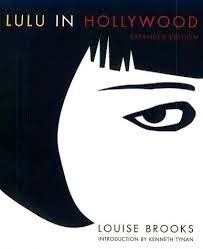Smith, Dominic. The Electric Hotel. New York: Farrar, Straus and Giroux. 2019. Print
Each morning, for more than thirty years, Claude Ballard returned to the hotel lobby with two cameras strapped across his chest and a tote bag full of foraged mushrooms and herbs.
His long walking circuit took in Little Armenia, where he photographed rug sellers, smoking cigarettes in the dawning light or, more recently, the homeless college dropouts and beatniks along Sunset Boulevard, striplings, the doorman called them, the ambassadors of Hollywood ruin.
Description:
Here is a fascinating novel. Dominic Smith'sThe Electric Hotel follows the fictional life of narrator Claude Ballard, an ancient cinematographer from the earliest days of movies. Ballard, now an old man, has a chance encounter with a graduate film student in the seedy Knickerbocker hotel in Hollywood where Ballard has lived for decades.
Celebrities once sat in easy chairs smoking cigars or reading Variety, but now an unemployed screenwriter was taking his pet iguana for a morning stroll and Susan Berg, an actress of the silent era, stood in her robe whispering a monologue to an empty chaise lounge.The student and Ballard talk about Ballard's life in the first days of films working in Paris with the Lumiere brothers and their astonishing moving pictures. Ballard traveled the world as a projectionist for the Lumieres to bring their new medium to growing audiences. Soon he is not only cranking the projector but making and showing his own short, experimental film clips.
Ballard dreams of creating an epic, ground-breaking movie, a unique story starring the beautiful Sabine Montrose, an acclaimed stage actress who was once Ballard's lover. His shocking film centers around a mysterious widow who oversees a hotel outfitted with new electric lights, a place where gentlemen lodgers check in but soon disappear. Ballard's ambitious story is complete with a daredevil stunt man capable of lighting himself on fire, a dirigible, and scenes shot for the first time completely at night under lights, His struggles to finance and complete this movie, keep his relationship with Sabine alive, and develop new filming techniques.
World War I brings on new challenges and opportunities for Ballard. He is captured by Germans and forced to make a documentary to prove that the German takeover of Belgium was peaceful and welcomed by the native people. Of course, Ballard has his own plans.
Historically researched by Smith, The Electric Hotel has it all: part history, part love story, part human drama. He carefully describes the development and evolution of snippets of film showing non-related actions growing into longer stories with stage actors and assigned lines and actions. Smith shows the battle with Thomas Edison over the use of patented motion picture equipment techniques, outcomes that bankrupted many production companies.
Readers will be absorbed into this fascinating early days of movies and the origins of production companies, actors, stories, and techniques to bring movies to a hungry audience. Dreamers and achievers like Ballard lead the way, slowly developing the techniques and plots, then melding them with the actors into a unique movie and experience. Wonderful reading.
____________________
If this book interests you, be sure to check out:
If this book interests you, be sure to check out:
Vance, Jeffery. Harold Lloyd: Master Comedian.
Wonderful book about the famous silent comedian, Harold Lloyd, full of photos of sets, actors, and Lloyd's personal collection, as well as plot summaries and insider stories for each of his films. Wonderful! (previously reviewed here)
Brooks, Lulu. Lulu in Hollywood.
Louise Brooks was picked out of the chorus line of the Ziegfeld Follies in 1925, placed in silent films, and became a huge sex star of the screen. This, her autobiographical work, is the compilation of many of her articles she wrote, diaries, and personal musings. A great look at the early days of film. (previously reviewed here)

